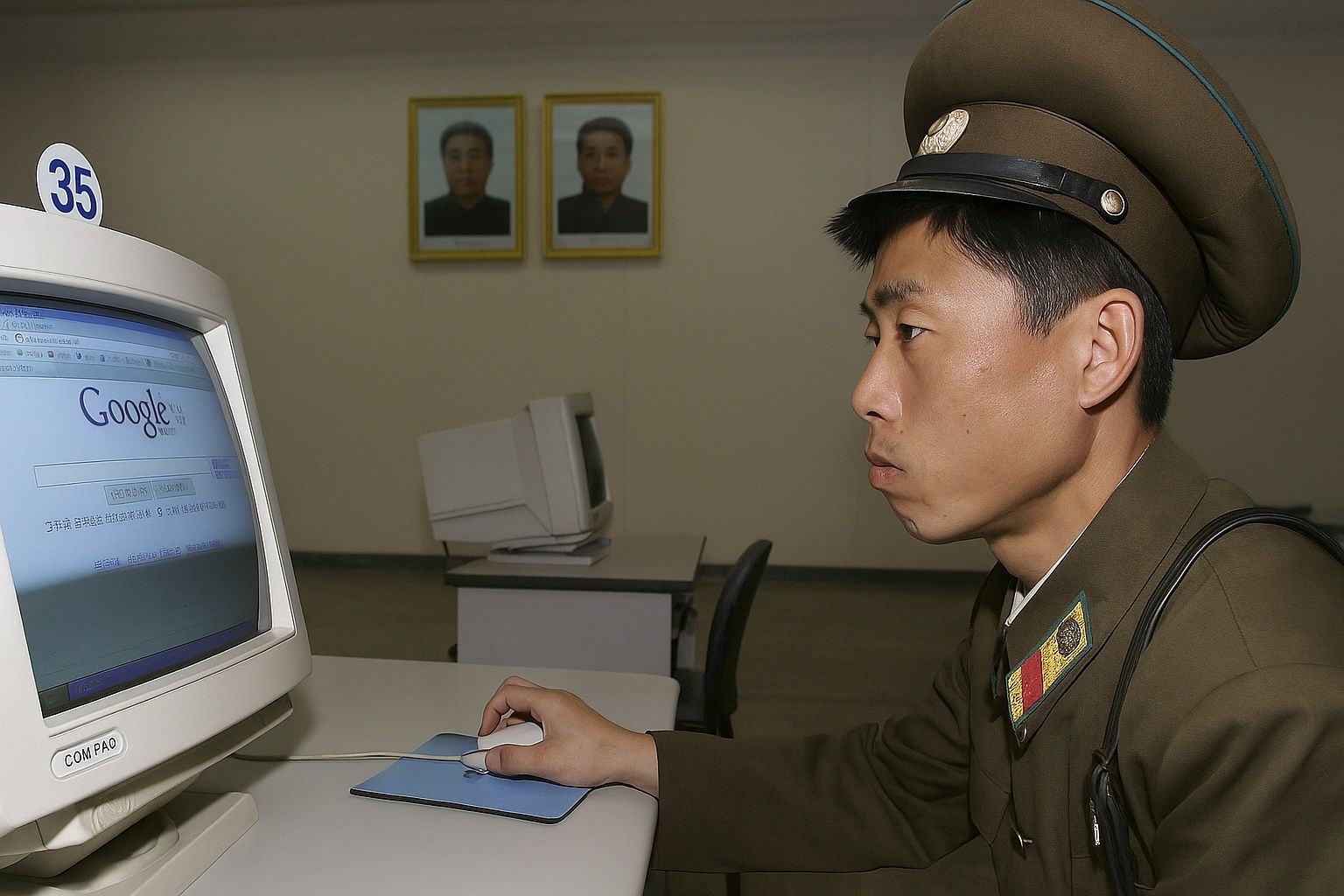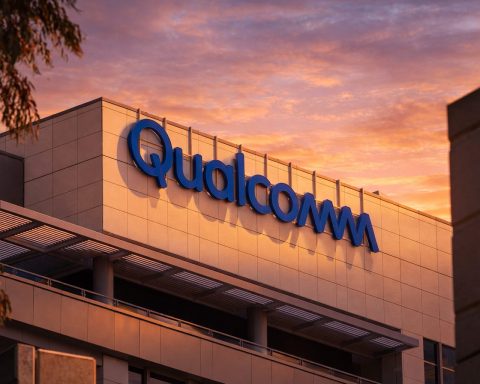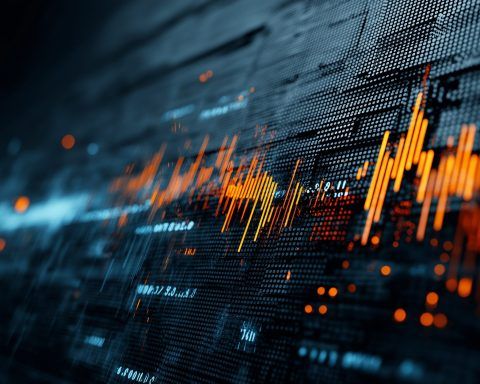- Kwangmyong is North Korea’s national intranet launched in the early 2000s, a closed network that provides email, websites, and digital resources only within North Korea to isolate citizens from the global Internet. <li North Korea’s first internal email service, Sili Bank, was established in 2001 to enable internal electronic correspondence on Kwangmyong.
- The first intranet “internet café” opened in Pyongyang in 2002 with about 100 computers, marking the start of public access to Kwangmyong.
- Kwangmyong uses .kp domain names and private IP ranges such as 10.x.x.x, is not routable on the global Internet, and most access is via IP addresses directly or a domestic DNS.
- The intranet’s content includes roughly 5,000 state-approved websites as of the early 2020s, with major categories including KCNA news, Rodong Sinmun, and Juche materials, plus electronic libraries.
- The Korea Computer Center (KCC) and the Central Scientific and Technological Information Agency administer Kwangmyong, enforcing state censorship and updates.
- By around 2010, an estimated 200,000 privately owned PCs existed in Pyongyang, though home access to Kwangmyong remained limited (in 2017 only 19% of households had a computer and 1% had intranet access).
- Mobile access expanded rapidly: Koryolink 3G launched in 2008, by 2018 about 4–5 million people had mobile phones with intranet access, and in 2023 a 4G/LTE rollout supplemented the service, with Mirae Wi‑Fi intranet access introduced in 2018.
- Censorship and surveillance are pervasive: a 2014 smartphone update added a digital certificate to restrict media to government-approved content, and a 2022 Kwangmyong app provided location tracking and content control features.
- The regime also tolerates an offline information-smuggling network for foreign media (USBs, DVDs) and has imposed the 2020 Reactionary Thought Law with penalties including labor camps or execution for major dealers and 5–15 years for regular watchers.
Introduction to Kwangmyong
Kwangmyong (광명, meaning “bright light” or “bright star”) is North Korea’s own national intranet – a closed, domestic network that functions like an internal version of the internet [1]. It was launched in the early 2000s with the purpose of providing information and online services to North Korean citizens while keeping them isolated from the global Internet [2] [3]. In essence, Kwangmyong is a tightly controlled online environment that offers email, websites, and digital resources only within North Korea’s borders [4]. This system is significant because it allows the regime to disseminate state-approved information (such as news, educational material, and propaganda) widely, yet prevents the populace from accessing foreign content that might undermine government narratives [5]. The Kwangmyong intranet stands in stark contrast to the true global Internet, which in North Korea is strictly off-limits to all but a tiny elite [6]. By design, Kwangmyong plays a key role in the regime’s control over information, essentially acting as the Hermit Kingdom’s digital walled garden.
A computer lab at the Grand People’s Study House in Pyongyang, where North Koreans can access the Kwangmyong intranet (and not the global Internet). As of 2014, these library computers ran Windows XP with Internet Explorer 6.0 [7].
Historical Evolution and Development
North Korea began experimenting with computers and networking in the 1990s, laying the groundwork for a national intranet. The country’s first website (the Naenara web portal) went live in 1996 [8]. By 1997, plans were underway to build an internal network, with early intranet services appearing in special economic zones as testbeds [9]. The full nationwide Kwangmyong intranet became operational in the early 2000s [10]. In 2001, North Korea set up its first email service (Sili Bank) to allow internal electronic correspondence [11].
Throughout the 2000s, Kwangmyong steadily expanded. An “internet café” (intranet café) opened in Pyongyang in 2002 – the first public facility where people could pay to use computers connected to Kwangmyong [12]. These PC rooms (also called “Information Technology Stores”) soon appeared in other cities, although initially the fees were prohibitively expensive for average citizens [13]. By the mid-2000s, North Korean universities, libraries, research institutions, and government offices were being linked into the intranet [14] [15].
Notably, early Kwangmyong included social elements that the government later curbed. Prior to 2006, intranet chat rooms were popular, with users even organizing meet-ups (famously, a 300-person flash mob in 2005 to celebrate Naenara’s anniversary) [16]. Alarmed by this unsanctioned gathering, authorities shut down all chat rooms in 2006 [17]. (Regional chat forums were reportedly reintroduced in 2015, but under tighter watch [18].)
Through the 2010s, the intranet’s capabilities grew. A rudimentary video conferencing system called Rakwon was developed at Kim Il-sung University around 2010, and later saw widespread use for remote meetings (especially during the COVID-19 pandemic) [19]. In 2015, the first domestic online shopping sites appeared on Kwangmyong, and by 2021 there were reportedly 22 e-commerce websites for North Korean shoppers [20]. The Central Bank even introduced an electronic payment system in 2020 for intranet-based financial transactions [21]. These developments indicate that North Korea has aimed to modernize Kwangmyong’s services (at least superficially) to resemble a very limited, state-sanctioned version of e-banking, e-learning, and e-commerce, all within the country’s sealed network.
Throughout its evolution, Kwangmyong has been developed and managed by government agencies, notably the Korea Computer Center and the Central Scientific and Technological Information Agency [22] [23]. Periodically, the regime’s leadership has publicly pushed for expanding and upgrading the network. For example, in 2011, state media reported Kim Jong Il’s call for broadening the domestic computer network, underscoring how the intranet is seen as an important tool for science, education, and governance – as long as it remains under the regime’s tight control. In summary, over two decades, Kwangmyong grew from a nascent idea into a nationwide intranet, always balancing between adopting modern IT elements and enforcing censorship and isolation as core principles.
Technical Infrastructure and Operation
Kwangmyong’s infrastructure is fundamentally separated from the global Internet for security and censorship reasons. Technically, it functions like a large private LAN (local area network) spanning the country. The network uses North Korean domain names under “.kp” and IP addresses in ranges reserved for private use (such as the 10.x.x.x block) [24] [25]. These addresses are not routable on the global Internet, meaning that Kwangmyong’s websites and servers are invisible and inaccessible from abroad [26]. North Korean computers access intranet sites often by entering numeric IP addresses directly. In fact, due to limited exposure to the Latin alphabet, many users find it easier to remember and type numbers rather than English-based domain names, so a lot of Kwangmyong content is accessed via IP address (for example, typing 10.76.1.11 to reach the Naenara portal) [27] [28]. A domestic DNS system does exist for some parts of the network, but it’s not universally used [29].
Physically, Kwangmyong’s backbone likely consists of fiber-optic and cable links connecting major institutions in Pyongyang and provincial cities. It is maintained as a closed circuit – there is no direct gateway between Kwangmyong and the open Internet [30]. In sensitive facilities, computers that have intranet access are kept air-gapped (isolated) from any machines with Internet access, to prevent any data transfer between the two spheres [31]. All international connectivity for the separate “real Internet” in North Korea flows through controlled points (mainly a connection via China’s Unicom, and limited satellite links) which are entirely distinct from Kwangmyong’s domestic network [32]. This deliberate separation ensures that foreign websites cannot be reached from Kwangmyong, and domestic intranet sites cannot be reached by outsiders, effectively creating a walled-off cyberspace.
Despite its isolation, Kwangmyong mimics many features of the Internet (circa late 1990s or early 2000s in terms of technology). It uses a web browser interface (North Korean browsers, often built on modified versions of Firefox or Internet Explorer) to navigate sites. As noted in one firsthand account, the system “looks sort of like the internet circa 1994” – running on aging hardware and pirated software (for example, older Windows operating systems with outdated browsers) [33]. Connection speeds historically were slow; many users accessed Kwangmyong via dial-up modems until more modern infrastructure was added [34]. In recent years, the intranet backbone has been upgraded to support broadband in key institutions and 3G/4G wireless access (more on mobile access below), but it is still relatively low-bandwidth and prone to outages compared to international standards [35] [36].
The Korea Computer Center (KCC) – the regime’s IT bureau – administers the network, assigning domain names and IPs, and ensuring content updates go through the censorship filters [37]. Kwangmyong’s technical design serves its political purpose: it allows North Korea to have the trappings of an information society (online libraries, email, etc.) without opening the door to the World Wide Web. In effect, it’s a giant nationwide intranet analogous to what a large corporation might deploy internally, but scaled to a country and fortified by the state’s surveillance apparatus [38].
Content and Services Available on Kwangmyong
Although cut off from the global Internet, Kwangmyong hosts a variety of websites and online services tailored for North Korean needs. By outside estimates, the intranet contained on the order of 1,000 to 5,500 websites as of the mid-2010s [39], and around 5,000 sites by the early 2020s [40]. (For comparison, the global Internet has over a billion websites – illustrating how limited Kwangmyong’s scope is.) The content on these sites is all state-approved and curated. Much of it falls into a few categories:
- State News and Propaganda: Official news outlets have intranet versions. For example, the Korean Central News Agency (KCNA), the Rodong Sinmun newspaper, and Voice of Korea radio all publish their articles on Kwangmyong sites [41]. These allow citizens to read domestic news, propaganda statements, and leader speeches online. There are also sites featuring the Kim family’s writings and Juche ideology materials (available in multiple languages for those texts) [42]. Political content glorifying the regime or documenting its activities is widespread.
- Educational and Scientific Resources: A major emphasis of Kwangmyong is to disseminate technical and academic knowledge (filtered through a political lens). The intranet links universities, libraries, and research centers. There are electronic libraries and databases – for instance, the Grand People’s Study House (the national library) and the Sci-Tech Complex in Pyongyang both provide public terminals with access to large repositories of scientific literature [43] [44]. Over 30 million scientific and technical documents were reportedly posted on the intranet as of 2007 [45]. Academic websites allow sharing of research papers, and there are specialized portals for fields like medicine and engineering [46]. Video lectures and courses are available for distance learning in some subjects [47]. Essentially, the regime uses Kwangmyong to circulate educational materials internally, partly to compensate for limited print resources.
- Cultural and Reference Material: Kwangmyong features online dictionaries (including a multilingual dictionary for translating between Korean and English, Russian, Chinese, etc.) [48], encyclopedia-style resources, as well as cultural sites (e.g. a North Korean cooking recipe site and a portal on domestic films) [49]. These cultural sites are among the few that have also been accessible to foreigners on the global Internet (some .kp sites are hosted for external propaganda), but the vast majority of Kwangmyong content is internal-only [50]. There are also message boards and forums where approved discussions can take place about sports, science, or patriotic topics [51] [52].
- Email and Communication: Kwangmyong provides a national email service, allowing registered users to send messages within North Korea [53]. This works similarly to webmail or Outlook, but cannot reach outside addresses. Intranet message boards and formerly chat rooms (text chat) have existed for communication among users on the network [54]. A few accounts indicate that a Facebook-like social network was created for a limited group (university students and professors) around 2013, used for things like posting birthday messages [55]. This suggests North Korean developers have attempted rudimentary social media on Kwangmyong, albeit on a small scale. In 2016, the state also launched Manbang, an IPTV video streaming service accessible via intranet-connected set-top boxes and even smartphones [56]. Manbang (meaning “Everyone”) lets users watch state TV channels, documentaries, and movies on demand – it’s been compared to a North Korean version of Netflix, though with only government-approved content [57].
- Information from the Global Internet (Filtered): Interestingly, North Korean authorities do import some foreign information into Kwangmyong. Copies of select foreign websites (especially scientific or technical sites) are downloaded from the real Internet, then reviewed and censored before being hosted on the intranet [58]. For example, material from academic databases or science hubs abroad might be added to North Korea’s internal repositories after removing any politically sensitive content. This way, North Korean researchers can access a slice of global knowledge (say, an old Wikipedia snapshot or scientific articles) without ever connecting to the outside world. Everything is vetted – if a foreign science article had a forbidden reference or inconvenient fact, it would likely be omitted. Through this method, large amounts of global information have seeped into Kwangmyong in a controlled manner [59].
- E-Commerce and Services: By the mid-2010s, Kwangmyong started offering limited domestic e-commerce. There are reports of online shops selling items like stamps and local products for domestic currency or even for hard currency earnings [60]. Several online banking or payment sites exist to support those transactions (likely only for a privileged few who have bank accounts) [61]. Government agencies and universities also use the intranet for administrative services and announcements. North Korea even has a known online gaming presence on Kwangmyong – simple games, including a Korean chess game, have been available to play on the network [62]. In one case, a travel booking site was said to allow citizens to plan domestic vacations online (within North Korea only) [63]. All these services mimic what internet users elsewhere might do (shopping, banking, entertainment), but entirely within a closed, government-supervised network.
In summary, Kwangmyong’s content ecosystem is a miniature, sanitized version of the Internet, consisting of a few thousand websites that deliver North Korean propaganda, news, educational content, and limited digital conveniences. It crucially lacks any user-generated content from the open world – no global social media, no uncensored news, no outside e-commerce. Everything on Kwangmyong reinforces official narratives or provides practical knowledge stripped of dissent. Yet, for many North Koreans, this is the only online world they know. As one observer noted, an average person in Pyongyang might assume “the internet” refers to Kwangmyong itself [64], since the real Internet is beyond reach. Thus, Kwangmyong defines the boundaries of accessible information for the vast majority of North Korean citizens.
How Citizens Access Kwangmyong
Access to Kwangmyong is limited and closely monitored, but in principle it is available in many parts of the country (unlike the global Internet, which is virtually inaccessible to the public). Originally, usage was confined to major cities and institutions – places like Pyongyang, other provincial capitals, universities, major factories, and government centers have the intranet connectivity [65]. For example, the Pyongyang Sci-Tech Complex (a large science library opened in 2015) reportedly has around 3,000 computer terminals for visitors to surf Kwangmyong [66]. School children, workers, and researchers can go there to look up information for their studies or jobs [67]. Another key site is the Grand People’s Study House (the national library), which also provides intranet terminals for public use under staff supervision [68]. In these controlled environments, ordinary people can read articles, download science PDFs, or check email on Kwangmyong – but only what the state permits.
Beyond public libraries, Kwangmyong access gradually expanded via “PC rooms” or intranet cafés. As noted, the first such café opened in 2002 in Pyongyang with about 100 computers [69]. Run jointly by a North Korean company and a South Korean firm at the time, it allowed anyone (who could afford it) to log into Kwangmyong for a fee [70]. Over the 2000s, similar IT centers sprouted up in other cities. Users typically pay by the hour to use a computer. However, in the early years, the cost was extremely high relative to incomes – Daily NK reported in 2005 that the fees were “prohibitively expensive” for a typical citizen [71]. This meant that initially, the clientele of internet cafés were mostly affluent or well-connected people. Over time, prices may have become more manageable, especially as more North Koreans gained exposure to computers through school or work.
Another avenue has been personal home computers, though owning a computer in North Korea is not a simple matter. To install a PC at home, a person must obtain a permit and have the machine inspected by authorities [72]. All private computers are registered with the local police – analogous to how firearms are registered – and merely having a computer requires official permission [73]. This policy reflects the regime’s deep concern about uncontrolled digital activity. Nonetheless, by around 2010, an estimated 200,000 privately owned PCs existed in Pyongyang homes (mostly among the elite) [74]. Even with a home computer, not everyone gets to plug into Kwangmyong: the machine must be specifically authorized for intranet access, likely with some kind of approved modem or login, and perhaps even physically configured by technicians to connect only to Kwangmyong and not any unauthorized networks.
Surveys illustrate how limited home access still is. In 2017, only 19% of North Korean households had a computer at all, and just 1% had a computer with intranet access (even in Pyongyang, only about 5% of households had Kwangmyong connections on their PCs) [75]. These numbers show that while the intranet has a presence, the vast majority of citizens did not personally go online at home. Instead, accessing Kwangmyong meant going to a library, an office, or a school computer lab.
Mobile phones have been a game-changer in recent years, vastly increasing the number of people who can access digital information. North Korea introduced mobile communication in earnest with the Koryolink 3G network in 2008, and by the 2010s, millions of North Koreans obtained cellphones (mostly simple feature phones and later Android-based smartphones). Importantly, North Korean phones for citizens are restricted to domestic services – they cannot access the global Internet, only Kwangmyong data and state-run apps [76]. As mobile service spread, so did intranet usage: by 2018 it was estimated that 18–20% of the population had mobile phones with access to Kwangmyong’s services [77]. Given a population around 25 million, this suggests roughly 4 to 5 million people could use the intranet via phones by 2018. Indeed, mobile phones have become the most common way for North Koreans to get online (on Kwangmyong), far outpacing desktop computer usage [78] [79]. As of 2020, there were about 4.5 million mobile subscribers, and by some 2022 estimates, around 6.5–7 million cellular subscriptions in the country [80] [81]. Many of these phones are data-enabled for the intranet.
Access via phone is typically provided through the cellular data network (3G, and recently 4G): North Korea rolled out a new 4G/LTE service in late 2023 to upgrade its intranet connectivity for mobile users [82]. There is also a special Wi-Fi-based intranet access service called “Mirae” (introduced in 2018), which allows smartphones to connect to Kwangmyong in parts of Pyongyang via Wi-Fi hotspots and a separate SIM card [83]. All these developments indicate an effort by the regime to modernize the intranet’s accessibility – giving people a taste of mobile internet convenience, but strictly within the confines of Kwangmyong.
It’s worth noting that every device – be it a PC or phone – must be government-approved and configured for intranet use. North Korean smartphones are usually locally branded (running a highly modified Android OS) and must be registered with surveillance software (more on that in the next section) [84]. Foreigners visiting North Korea, on the other hand, cannot access Kwangmyong at all; instead, foreigners (or a very few privileged locals) use separate computers/phones that connect to the international Internet (often via a different SIM or network) [85]. This strict separation means a North Korean citizen with a normal device will only ever see Kwangmyong’s closed network. In sum, while access points for Kwangmyong have expanded – from a few elite institutions to now many citizens’ pockets – the access is carefully controlled and remains a supervised privilege rather than a right.
Censorship and Surveillance on the Intranet
Kwangmyong was built from the ground up as a censored network. Its fundamental purpose is to keep North Koreans informed in a regime-approved bubble, shielding them from any “undesirable” information. Therefore, every website, document, or service on Kwangmyong goes through government vetting before it reaches users [86]. There is no direct link to the outside Internet, so by design, “unwanted information cannot enter the network” [87]. Instead, content from abroad is filtered and sanitized by state agencies like the Central Information Agency for Science and Technology before being hosted internally [88]. Sensitive political topics, foreign news that contradicts the official line, or any criticism of the Kim regime simply do not exist on Kwangmyong. The intranet in effect functions as a giant information censorship tool – Daily NK described it as preventing leaks of classified data and blocking access to undesirable info [89].
Monitoring is extensive. Kwangmyong is maintained and watched by government entities (such as the Ministry of State Security and specialized IT surveillance units) [90]. All user activity on the intranet – searches, emails, posts – can be tracked. Given that users typically log in from known terminals (e.g. a library PC room) or with registered personal devices, anonymity is virtually nonexistent. The state can easily trace who looked at what. Intranet usage likely generates logs that authorities can review for any signs of politically suspect behavior.
With the rise of mobile connectivity, the regime has implemented even more invasive measures. In 2014, for instance, an update was pushed to North Korean smartphones that introduced a digital certificate system to restrict media – after that update, phones would only display government-approved files and apps, preventing people from opening any content that wasn’t sanctioned [91] [92]. More recently, in 2022 the government mandated a “Kwangmyong app” be installed on all cell phones as a prerequisite for accessing the intranet [93]. This app not only provides a portal to state media (like the Rodong Sinmun newspaper) but also contains hidden surveillance functions [94]. According to Radio Free Asia, this software allows authorities to track users’ locations and detect if they attempt to view any foreign media on their device [95]. In effect, the smartphone becomes an always-on spy in one’s pocket.
Revelations from a smuggled North Korean smartphone analyzed in 2024–2025 have shed light on the extreme degree of phone surveillance. The device ran a heavily modified Android OS designed to enforce ideological purity [96]. For example, it was found that typing certain words triggers automatic censorship: if a user types “South Korea,” the phone instantly replaces it with “puppet state” (the official derogatory term for South Korea) [97]. Similarly, the South Korean colloquial term “oppa” (often heard in K-dramas) gets autocorrected to “comrade” on North Korean phones [98]. The phone also had a hidden feature where it silently takes screenshots of the user’s screen every five minutes and stores them in an inaccessible folder [99] [100]. These screenshots can later be retrieved by authorities to see exactly what the user was doing. In other words, every North Korean smartphone is effectively bugged. If a user somehow got hold of a foreign video or an e-book and tried to view it, not only would the phone likely block it, but it would also record evidence of the attempt. Tampering with these security features or trying to bypass them is a serious crime.
This intense surveillance environment extends to the intranet usage over mobile networks as well. A 2019 report on the Koryolink cellular network noted that smartphones were built to block installation of unapproved apps, and software was installed to take random screenshots of user activity, making it “one of the most surveilled cellular environments in the world.” [101] In the mobile network’s architecture, domestic users are walled off from international lines and can only access Kwangmyong data, eliminating any chance of accidental exposure to the open Internet [102]. All international calls and traffic for locals are disabled; only a separate category of “international” or “special” users (mostly foreigners or top cadres) can reach outside websites, and even they cannot reach the internal intranet sites from those connections [103]. This two-tier system serves as a firewall between North Koreans and the world, as well as between foreigners and the North Korean internal web [104].
In summary, censorship is absolute on Kwangmyong: the state pre-approves everything that appears online, and no uncensored user-generated content is allowed. Surveillance is omnipresent: the state monitors everything users do on the intranet or on their devices, employing both technical mechanisms (like automated logging and screenshots) and human oversight. The result is that North Koreans using Kwangmyong operate under a digital Panopticon – they must assume that Big Brother is watching every click and keystroke. This creates a chilling effect; people learn to self-censor their online behavior, sticking to permitted sites and searches. After all, if someone were even perceived as trying to find foreign information or distribute unapproved content via Kwangmyong, the consequences could be dire. (That said, given that Kwangmyong lacks any overt anti-regime content by design, an average user has little opportunity to even stumble on anything taboo online.) The overarching theme is that Kwangmyong allows the regime to harness the benefits of digital information dissemination while maintaining Orwellian control over it.
Comparison: Kwangmyong vs. the Global Internet in North Korea
North Korea’s handling of cyberspace involves a stark two-tiered system: the tightly controlled domestic intranet (Kwangmyong) for the populace, and extremely limited access to the global Internet for a select few. The table below summarizes key differences between the national intranet vs. the global Internet as experienced (or not experienced) in North Korea:
| Aspect | Kwangmyong Intranet (Domestic) | Global Internet Access (International) |
|---|---|---|
| Availability | Available within North Korea only, across major cities, universities, libraries, and some homes. Many citizens (especially in urban areas) can access it via approved computers or smartphones [105] [106]. | Available only to a tiny elite and foreigners. Estimated at just a few thousand users (top officials, select researchers, hackers, etc.) out of ~25 million people [107]. Most North Koreans cannot access the global Internet at all. |
| Network Scope | Entirely internal network – no connection to the outside world. Uses private IP ranges and .kp domain names that aren’t reachable from abroad [108]. All content is hosted on servers inside the country [109]. | Connected to the worldwide Internet via limited links (through China’s network and satellite channels) [110]. Offers access to international websites and online services, albeit through a government-controlled gateway. The country reportedly has only 1,024 IP addresses routed to the global Internet [111]. |
| Who Can Access | Broad (in theory): Any approved North Korean citizen at designated sites or with permitted devices. In practice, primarily used by students, officials, and residents of Pyongyang or other cities with intranet facilities [112] [113]. Foreigners and tourists cannot access Kwangmyong at all [114]. | Highly Restricted: Only the highest-ranking officials, select professionals (like propagandists or scientists with special duties), and foreign diplomats/visitors can go online globally [115]. Even those users often have separate computers or SIM cards for Internet, and they usually cannot share that access with the general population [116]. |
| Content & Services | ~5,000 state-approved websites including domestic news (KCNA, newspapers), educational resources, reference libraries, and government portals [117] [118]. Runs on a closed web with its own email, search engine, and limited social and entertainment platforms (all censored). No foreign social media or uncensored information is present [119]. Content from abroad is added only after heavy filtering [120]. | Full range of global websites and media, theoretically identical to what any Internet user elsewhere could see – from Google to YouTube – but North Korean users are heavily monitored. Those few with access can visit international sites (except perhaps blocked anti-DPRK sites) for work or propaganda purposes [121]. Usage is supervised; internet-connected computers are kept separate from intranet ones for security [122]. |
| Censorship | Total censorship: Everything on Kwangmyong is curated by the state. No direct news from foreign sources; politically sensitive topics are absent [123]. Users cannot publish freely – any interactive services exist within monitored, real-name environments. The intranet itself functions as a censorship mechanism preventing exposure to outside ideas [124] [125]. | Likely monitored but not filtered at source: Because so few North Koreans go on the global Internet, the approach is to restrict access rather than filter sites (beyond standard firewalls). Those allowed online know they are trusted or watched. The state doesn’t need to wholesale block websites for them – instead it incentivizes loyalty (high perks for approved users) and punishes any misuse. However, access points go through China (which has its own Great Firewall), so some global content could be indirectly filtered upstream [126]. |
| Devices & Access Method | Accessed on approved domestic devices: specially sanctioned PCs (often in labs or offices) or North Korean-made phones/tablets with intranet capability [127] [128]. Connections are via internal networks: Ethernet, dial-up, or the national 3G/4G mobile network that routes only to Kwangmyong [129] [130]. Users log in with state-provided credentials in many cases (e.g., at public terminals). | Accessed on segregated devices/network: e.g. dedicated computers in certain offices that have satellite or international lines, or foreign-owned laptops on special SIM cards (for internet). North Korea’s mobile network has a split – foreigners get SIMs that allow international calls & internet but cannot call locals, whereas locals’ SIMs can’t reach the Internet [131]. Thus, an elite official might have a separate “internet computer” or phone not available to the public. |
| Permissibility | Encouraged within limits: The regime promotes using Kwangmyong for education, science, and consuming approved news. It’s portrayed as a tool for socialist development and knowledge (with many propaganda slogans to use the intranet). However, usage is still a privilege that can be revoked, and everything is tracked. Attempting to circumvent Kwangmyong or access foreign sites (which is technically impossible from it) is treated as subversive. | Forbidden for ordinary citizens: It is illegal for a normal North Korean to try to access the global Internet (such acts are considered espionage or treasonous). Only those explicitly granted permission can use it. For that elite group, usage is technically allowed as part of their work (and they are rewarded to ensure loyalty) [132] [133]. Any unauthorized use or leaks of information can result in severe punishment. In short, the default policy for the masses is “no Internet at all.” |
Table: Comparing North Korea’s domestic “Kwangmyong” intranet with global Internet access in the country. As shown, the intranet is the regime’s mass media network for citizens, whereas true Internet connectivity is reserved for an exclusive minority.
Mobile Networks and Phones in North Korea’s Information Ecosystem
North Korea’s mobile phone network (notably Koryolink and the state-run Kang Song network) plays a dual role in the country’s information environment. On one hand, the proliferation of cell phones (over 5 million subscribers by 2019 and possibly ~7 million by 2022) means many North Koreans now have a digital device in hand [134] [135]. On the other hand, these devices are heavily controlled gateways – they can connect to the intranet and use government apps, but not the open Internet or international calls for domestic users [136].
All North Korean mobile phones for citizens operate under the same intranet restrictions described earlier. For instance, a North Korean with a smartphone can read the Rodong Sinmun on an app, watch state TV clips via Manbang streaming, or send text messages domestically, but cannot browse Google or send an email abroad. The telecom infrastructure enforces this: as noted, Koryolink’s network was explicitly set up so that “domestic users can’t access the internet, while international users (like foreigners) can, and neither can reach each other’s networks” [137]. This physical and software partitioning ensures no “accidental” connectivity beyond what’s allowed.
Furthermore, mobile networks are a tool of surveillance and control. The regime requires all phones to be bought through state-approved vendors, and each device’s SIM is tied to the owner’s ID. Calls can be monitored and are recorded; text messages can be filtered for banned content. North Korean phone networks were built with interception capabilities from the start – one document from the Koryolink project revealed the system could target thousands of subscribers for real-time monitoring of calls and data sessions [138] [139]. Given that independent encrypted apps (like Signal or foreign VPNs) are not available to the average user (the phones won’t let them be installed), the state essentially can access anything a person does on their phone.
Another phenomenon is “bluetooth” or offline phone content sharing among North Koreans, which emerged as a semi-grey area. People sometimes transfer music or videos between phones using Bluetooth or removable memory cards. This bypasses the telecom network but is risky if the content is forbidden. To counter this, newer North Korean smartphones implemented features that prevent opening unapproved video or image files, even if obtained offline, as mentioned earlier [140]. The mandatory security app and random screenshot feature further discourage people from viewing any smuggled media on their phones [141].
In summary, mobile networks have expanded digital access dramatically inside North Korea – you can see youths in Pyongyang with smartphones, and traders calling partners in other provinces. But this convenience comes entirely on the state’s terms: mobile connectivity = intranet connectivity (for almost everyone), and the surveillance built into the network and devices means phones are as much a leash as a link. The spread of mobiles has perhaps given North Koreans a taste of modern IT (they can take photos, use calculator apps, play approved games, read the news digitally), but it has not granted them free information. If anything, it has extended the state’s reach, enabling the regime to push curated content directly to people’s pockets and keep a closer eye on their communications.
Information Access Outside the Official Networks (USBs, DVDs, etc.)
Despite the regime’s iron grip on official networks, an informal underground of information exchange has long existed in North Korea. For decades, North Koreans hungry for outside news or entertainment have resorted to smuggling and covert sharing of foreign media. This includes South Korean TV dramas, movies, pop music, foreign news broadcasts, and e-books, which are illicitly brought into the country on physical media like DVDs, USB flash drives, SD cards, and portable players. These devices don’t rely on the internet or intranet at all – instead, they form a kind of “sneakernet” where content is carried across the border (often from China) and then secretly circulated among trusted friends.
Over time, the technology evolved: in the 1990s it was VHS tapes; in the 2000s, DVDs and VCDs; by the 2010s, tiny USB sticks and memory cards became the main vectors [142]. Airdrop-like file sharing on phones is limited by security, so typically people view this contraband on DVD players or computers that are not connected to Kwangmyong (to avoid detection). Many North Koreans have had their first glimpse of the outside world – be it a South Korean soap opera, a Hollywood film, or K-pop music video – through these smuggled videos. Defector testimony suggests that by the 2010s, illicit foreign media consumption had become common among youth and even some officials, to the point that it was considered normal (though still dangerous) in many circles [143]. Often, local police could be bribed to look the other way, and crackdowns were sporadic [144].
However, under Kim Jong Un, especially in the last few years, the regime has launched an intense crackdown on foreign information, fearing its corrupting influence on society. In late 2020, North Korea passed a sweeping new “Reactionary Thought Law” that severely punishes any dealing with outside media [145] [146]. Under this law, being caught with South Korean films or music is no longer a minor offense – it carries extremely harsh penalties. For example, distributing South Korean movies or dramas can be punished by an indefinite term in a labor camp or even execution (for major dealers), and simply watching a South Korean show can lead to 5–15 years of hard labor [147] [148]. There have been reports of people executed for selling USBs loaded with South Korean content in the past couple of years [149]. Even using South Korean slang or style in conversation (a sign one has been watching K-dramas) is criminalized, with possible prison terms [150].
Despite these draconian measures, the very need for such laws suggests that demand for foreign information persists. Some North Koreans still carefully seek out banned media, as it offers an unfiltered window to the outside world – showing living standards, fashions, and ideas far different from their state propaganda. Organizations abroad (like defector-led groups) even attempt to send information in, for instance via balloon launches of USB drives or radio broadcasting. The North Korean government counters this with signal jamming (to block foreign radio/TV) and harsh punishment for those caught listening to foreign stations [151] [152].
In short, parallel to Kwangmyong’s officially sanctioned content, there is a shadow distribution network for unauthorized content. It’s completely offline and illegal. Participation is risky – as noted, people caught with foreign videos have been sentenced to years in prison camps [153]. Yet, many are willing to take the risk, indicating a real appetite for knowledge and entertainment beyond what the regime provides. This cat-and-mouse dynamic between information smugglers and state security highlights the ultimate limitation of Kwangmyong: no matter how much the government polishes its intranet with updated services, a segment of the populace will always recognize what’s missing and attempt to get it elsewhere. And that, in turn, drives the regime to ever more aggressive surveillance and punishments in its attempt to maintain an informational iron curtain.
Implications for North Korean Society and Regime Control
Kwangmyong and the overall stratification of information access in North Korea have profound implications for both everyday life and the regime’s stability. For the average North Korean, knowledge is bounded by what the state permits. A student writing a research paper will use the intranet to pull facts – but those facts will omit any content critical of the DPRK or praising of rival nations. A curious mind cannot simply google outside perspectives. This creates a citizenry that is highly informed in some areas (e.g., scientific knowledge, technical skills via intranet resources) yet deeply uninformed or misinformed about the broader world. The intranet bolsters the regime’s propaganda: North Koreans can read daily about their leadership’s “achievements” and the inferiority of capitalism through Kwangmyong news, reinforcing the state narrative in a modern format.
Socially, the limited rollout of Kwangmyong also reflects and reinforces class divisions. Elites in Pyongyang have had computers and smartphones with intranet for years, using it for work and leisure (within the approved bounds). Meanwhile, rural populations might have never touched a computer or seen the intranet at all. This “digital divide” inside the country mirrors the political hierarchy – with the elite enjoying slightly more connectivity (and even some supervised global Internet access in select cases), and the masses kept at the lowest level of information access. Eric Talmadge memorably called it North Korea’s “digital divide: online elites, isolated masses” [154]. Those at the top benefit from both worlds (closed internal info and selective external info for their needs) while ensuring the masses remain in an information dark age relative to the outside.
For the regime, Kwangmyong is a double-edged sword. On one side, it’s a powerful tool of control. It allows the government to disseminate propaganda more efficiently than through analog means, and to possibly detect dissent (for instance, if someone searches something sensitive on the intranet, that could raise a red flag). It also aids economic and scientific development in a controlled way – researchers can access databases of knowledge to contribute to domestic projects, students can study IT skills (like learning to code on isolated networks), which ultimately helps the state’s capabilities (like producing trained computer scientists for its cyber army or engineers for industry) without exposing them to subversive information. Thus, the regime gets to harness some benefits of the internet era (education, commerce, communication) without loosening political control.
On the other side, having any form of connectivity introduces the idea of a wider world. Even though Kwangmyong itself is sanitized, the very existence of a network hints at something beyond. Why can’t one access certain things? Why are some sites blocked or some terms forbidden? For those who become aware of the Internet beyond Kwangmyong – perhaps through a smuggled South Korean drama or hints from a relative in Pyongyang – it can create discontent or at least curiosity. The widespread adoption of mobile phones means millions of North Koreans now have devices capable of connecting to a real internet, if only they could break the lock. This latent potential is perhaps worrisome to the regime. It is telling that North Korea’s ICT policy always trades off openness for control: every time technology advances (e.g., smartphones, 3G), the state doubles down with new laws and surveillance (e.g., crackdown laws, spyware apps) to maintain its grip.
In recent years, Kim Jong Un’s regime has shown zero tolerance for any breach in the information wall. The harsh “anti-reactionary” law of 2020 and reported public executions for media smuggling are meant to instill fear and deter people from even thinking about outside information [155] [156]. In parallel, investments in Kwangmyong (like updating it with 4G access, new services, etc.) show the regime wants to make the intranet as appealing as possible – to satisfy people’s curiosity and need for information in a controlled way, so they won’t seek it illicitly. It’s a carrot-and-stick approach: Here is our safe, state-approved “internet” for you (carrot), and if you try the real internet or foreign media, you’ll face dire consequences (stick).
So far, this approach has been largely successful in keeping the general populace in an information bubble. The costs, however, include technological stagnation and isolation. North Korean society misses out on the creativity, innovation, and economic growth that an open internet can foster. For example, while elsewhere entrepreneurs build startups on the internet, North Koreans have no such opportunity on Kwangmyong (any e-commerce is state-run). Culturally, the youth have limited avenues for expression or global cultural exchange – which might fuel frustration or apathy.
In conclusion, Kwangmyong encapsulates the trade-off at the heart of North Korea’s system: the regime will adopt modern tools only to the extent that they can be bent to serve authoritarian control. The national intranet provides a semblance of modern IT life but ultimately strengthens the state’s grip over the flow of information. It ensures that Kim Jong Un’s regime maintains an “offline” level of control even in the online realm [157]. For outsiders, Kwangmyong offers a fascinating glimpse into a parallel internet universe – one where content is frozen in a propaganda time warp and every user is supervised. For North Koreans, it is both a window to knowledge and a constantly monitored mirror reminding them that even their thoughts may not be private. As North Korea moves forward, the regime will likely continue expanding Kwangmyong’s reach (more users, more mobile access) while erecting ever higher barriers against the open Internet. The ultimate implication is clear: in the DPRK, information is power, and by tightly controlling Kwangmyong, the state aims to keep that power firmly in its own hands.
Sources: North Korea’s domestic intranet Kwangmyong has been documented in various reports and analyses [158] [159] [160] [161]. Details on its content and usage come from defector testimonies, research by Martyn Williams and others [162] [163], as well as official statements. Information on mobile network controls and the recent crackdown law were reported by outlets like 38 North and Daily NK [164] [165]. These sources collectively shed light on how Kwangmyong operates as a tool of both connectivity and censorship in North Korea.
References
1. en.wikipedia.org, 2. en.wikipedia.org, 3. en.wikipedia.org, 4. en.wikipedia.org, 5. en.wikipedia.org, 6. www.vox.com, 7. commons.wikimedia.org, 8. en.wikipedia.org, 9. en.wikipedia.org, 10. en.wikipedia.org, 11. en.wikipedia.org, 12. en.wikipedia.org, 13. en.wikipedia.org, 14. www.northkoreatech.org, 15. www.northkoreatech.org, 16. en.wikipedia.org, 17. en.wikipedia.org, 18. en.wikipedia.org, 19. en.wikipedia.org, 20. en.wikipedia.org, 21. en.wikipedia.org, 22. en.wikipedia.org, 23. en.wikipedia.org, 24. en.wikipedia.org, 25. www.northkoreatech.org, 26. www.northkoreatech.org, 27. www.northkoreatech.org, 28. www.northkoreatech.org, 29. www.northkoreatech.org, 30. en.wikipedia.org, 31. en.wikipedia.org, 32. www.vox.com, 33. www.vox.com, 34. www.vox.com, 35. www.vox.com, 36. en.wikipedia.org, 37. en.wikipedia.org, 38. www.northkoreatech.org, 39. en.wikipedia.org, 40. en.wikipedia.org, 41. en.wikipedia.org, 42. en.wikipedia.org, 43. en.wikipedia.org, 44. en.wikipedia.org, 45. en.wikipedia.org, 46. en.wikipedia.org, 47. en.wikipedia.org, 48. en.wikipedia.org, 49. en.wikipedia.org, 50. en.wikipedia.org, 51. en.wikipedia.org, 52. en.wikipedia.org, 53. en.wikipedia.org, 54. en.wikipedia.org, 55. en.wikipedia.org, 56. en.wikipedia.org, 57. en.wikipedia.org, 58. en.wikipedia.org, 59. en.wikipedia.org, 60. en.wikipedia.org, 61. en.wikipedia.org, 62. en.wikipedia.org, 63. en.wikipedia.org, 64. www.vox.com, 65. en.wikipedia.org, 66. en.wikipedia.org, 67. en.wikipedia.org, 68. en.wikipedia.org, 69. en.wikipedia.org, 70. en.wikipedia.org, 71. en.wikipedia.org, 72. en.wikipedia.org, 73. www.vox.com, 74. en.wikipedia.org, 75. en.wikipedia.org, 76. www.38north.org, 77. en.wikipedia.org, 78. en.wikipedia.org, 79. en.wikipedia.org, 80. en.wikipedia.org, 81. www.38north.org, 82. en.wikipedia.org, 83. en.wikipedia.org, 84. en.wikipedia.org, 85. www.38north.org, 86. en.wikipedia.org, 87. en.wikipedia.org, 88. en.wikipedia.org, 89. en.wikipedia.org, 90. en.wikipedia.org, 91. www.38north.org, 92. www.38north.org, 93. en.wikipedia.org, 94. en.wikipedia.org, 95. en.wikipedia.org, 96. www.ndtv.com, 97. www.ndtv.com, 98. www.ndtv.com, 99. www.ndtv.com, 100. www.ndtv.com, 101. www.38north.org, 102. www.38north.org, 103. www.38north.org, 104. www.38north.org, 105. en.wikipedia.org, 106. en.wikipedia.org, 107. www.vox.com, 108. www.northkoreatech.org, 109. en.wikipedia.org, 110. www.vox.com, 111. www.vox.com, 112. en.wikipedia.org, 113. en.wikipedia.org, 114. en.wikipedia.org, 115. www.vox.com, 116. www.38north.org, 117. en.wikipedia.org, 118. en.wikipedia.org, 119. www.vox.com, 120. en.wikipedia.org, 121. www.38north.org, 122. en.wikipedia.org, 123. en.wikipedia.org, 124. en.wikipedia.org, 125. en.wikipedia.org, 126. www.vox.com, 127. en.wikipedia.org, 128. en.wikipedia.org, 129. www.vox.com, 130. en.wikipedia.org, 131. www.38north.org, 132. www.vox.com, 133. www.vox.com, 134. www.38north.org, 135. www.38north.org, 136. www.38north.org, 137. www.38north.org, 138. www.38north.org, 139. www.38north.org, 140. www.38north.org, 141. www.38north.org, 142. www.38north.org, 143. www.38north.org, 144. www.38north.org, 145. www.38north.org, 146. www.38north.org, 147. www.38north.org, 148. www.38north.org, 149. www.38north.org, 150. www.38north.org, 151. www.csis.org, 152. www.38north.org, 153. www.vox.com, 154. en.wikipedia.org, 155. www.38north.org, 156. www.38north.org, 157. en.wikipedia.org, 158. en.wikipedia.org, 159. en.wikipedia.org, 160. en.wikipedia.org, 161. www.vox.com, 162. www.northkoreatech.org, 163. www.38north.org, 164. www.38north.org, 165. www.38north.org










